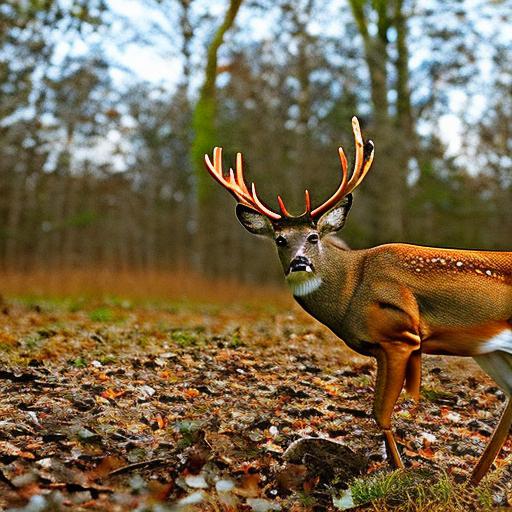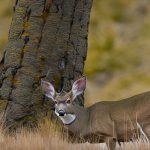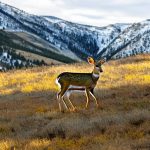Your cart is currently empty!

deer hunting trivia

Deer hunting is a popular activity in the United States, attracting millions of hunters each year. It is not only a thrilling sport but also an opportunity to connect with nature and enjoy the great outdoors. In this blog post, we will explore the different aspects of deer hunting, including its history, the different types of deer and their hunting seasons, the top states for deer hunting, popular hunting methods, the role of deer hunting in wildlife conservation, interesting facts about the biggest and smallest deer ever hunted, common gear and equipment used for deer hunting, etiquette and rules to follow, the health benefits of eating venison, and the future of deer hunting.
Key Takeaways
- Deer hunting has been practiced since ancient times and has evolved over the years.
- Different types of deer have different hunting seasons, and it’s important to know the regulations in your state.
- The top 10 states for deer hunting in the US include Texas, Wisconsin, and Michigan.
- Popular hunting methods for deer include bow hunting, rifle hunting, and muzzleloader hunting.
- Deer hunting plays a role in wildlife conservation by helping to manage deer populations.
The History of Deer Hunting: From Ancient Times to Modern Day
Deer hunting has a long history that dates back to ancient times. Early humans relied on hunting for survival, and deer were one of the primary sources of food. In ancient civilizations such as Egypt and Mesopotamia, deer hunting was depicted in cave paintings and sculptures. These early hunters used primitive tools such as spears and bows and arrows to hunt deer.
Over time, deer hunting evolved from a necessity for survival to a popular sport. In medieval Europe, deer hunting became a favorite pastime of the nobility. They would organize elaborate hunts with trained hounds and falcons. In the United States, deer hunting gained popularity in the 19th century as settlers moved westward and encountered abundant populations of white-tailed deer.
Today, deer hunting is regulated by state wildlife agencies to ensure sustainable populations and conservation efforts. It has become a cherished tradition for many families and an opportunity to bond with friends while enjoying the beauty of nature.
The Different Types of Deer and Their Hunting Seasons
There are several different types of deer found in the United States, each with its own unique characteristics and hunting seasons. The most common types of deer include white-tailed deer, mule deer, black-tailed deer, and elk.
White-tailed deer are the most widespread and abundant deer species in North America. They are known for their white tail that they raise when alarmed. White-tailed deer hunting seasons vary by state but generally occur in the fall and winter months.
Mule deer are found in the western United States and are known for their large ears and distinctive black-tipped tail. Mule deer hunting seasons also vary by state but typically occur in the late summer and early fall.
Black-tailed deer are a subspecies of mule deer found along the Pacific coast. They have smaller bodies and shorter antlers compared to mule deer. Black-tailed deer hunting seasons generally coincide with mule deer seasons.
Elk, also known as wapiti, are one of the largest species of deer in North America. They have impressive antlers and are highly sought after by hunters. Elk hunting seasons vary by state but typically occur in the fall.
The Top 10 States for Deer Hunting in the United States
The United States offers a wide range of opportunities for deer hunting, but some states stand out as the top destinations for hunters. These states have a combination of abundant deer populations, large hunting areas, and high success rates. The top 10 states for deer hunting based on popularity and success rates are:
1. Texas: Texas is known for its large deer population and diverse hunting opportunities. It offers both whitetail and mule deer hunting.
2. Wisconsin: Wisconsin is a popular destination for whitetail deer hunting, with its vast forests and agricultural lands providing excellent habitat.
3. Michigan: Michigan is home to a thriving population of whitetail deer, making it a favorite among hunters.
4. Pennsylvania: Pennsylvania has a long tradition of deer hunting and offers both whitetail and mule deer hunting.
5. Georgia: Georgia is known for its abundant deer population and offers a variety of hunting opportunities.
6. Missouri: Missouri has a healthy deer population and offers both whitetail and mule deer hunting.
7. Ohio: Ohio is known for its trophy whitetail deer and offers a limited number of permits each year.
8. Illinois: Illinois is known for its large whitetail deer and offers both archery and firearm seasons.
9. Kentucky: Kentucky has a growing deer population and offers both whitetail and mule deer hunting.
10. Iowa: Iowa is known for its trophy whitetail deer and offers limited tags each year.
These states offer a combination of public and private land hunting opportunities, making them ideal destinations for both experienced and novice hunters.
The Most Popular Hunting Methods for Deer
Deer hunting can be done using various methods, each with its own advantages and challenges. The most popular hunting methods for deer include bow hunting, rifle hunting, muzzleloader hunting, and crossbow hunting.
Bow hunting is a traditional method that requires skill and patience. It involves using a bow and arrow to take down a deer. Bow hunters typically hunt from tree stands or ground blinds, waiting for the perfect shot opportunity. Bow hunting allows for a closer range shot, which can be more challenging but also more rewarding.
Rifle hunting is the most common method used for deer hunting. It involves using a high-powered rifle to take down a deer from a distance. Rifle hunters typically hunt from elevated stands or spot and stalk through open fields or dense forests. Rifle hunting allows for longer range shots, making it easier to take down a deer quickly and efficiently.
Muzzleloader hunting is a traditional method that involves using a muzzleloading firearm to hunt deer. Muzzleloaders are loaded from the muzzle with black powder or other propellants, making them slower to reload compared to modern rifles. Muzzleloader hunting requires careful aim and precision, adding an extra level of challenge to the hunt.
Crossbow hunting is a method that combines elements of both bow hunting and rifle hunting. It involves using a crossbow, which is a modified bow mounted on a stock, to take down a deer. Crossbows are easier to aim and shoot compared to traditional bows, making them a popular choice for hunters who may have difficulty using a bow.
Each hunting method has its own pros and cons, and hunters should choose the method that best suits their skills and preferences. It is important to practice with the chosen weapon and become familiar with its capabilities before heading out into the field.
The Role of Deer Hunting in Wildlife Conservation
Deer hunting plays a crucial role in wildlife conservation by helping to control deer populations and prevent overpopulation. Overpopulation of deer can lead to habitat destruction, increased risk of disease transmission, and negative impacts on other wildlife species.
Hunting seasons and bag limits are carefully regulated by state wildlife agencies to ensure sustainable populations. These agencies monitor deer populations through surveys and research to determine the appropriate number of deer that can be harvested each year without negatively impacting the population.
In addition to population control, deer hunting also provides funding for wildlife conservation efforts. Hunting licenses, tags, and permits generate revenue that is used to fund habitat restoration, research, and other conservation initiatives. Hunters also contribute to conservation through organizations such as Ducks Unlimited and the National Wild Turkey Federation, which work to protect and enhance wildlife habitat.
Furthermore, deer hunting promotes ethical hunting practices and responsible stewardship of natural resources. Hunters are required to follow strict regulations and guidelines to ensure fair chase and humane harvesting of deer. They are also encouraged to practice ethical hunting practices such as taking only ethical shots, respecting private property rights, and reporting any illegal activities they witness.
Overall, deer hunting is an important tool for wildlife management and conservation. It helps maintain healthy deer populations while supporting habitat conservation efforts and promoting responsible hunting practices.
The Biggest and Smallest Deer Ever Hunted
Deer hunting has produced some impressive records for the biggest and smallest deer ever hunted. These records showcase the incredible size variations that can be found within deer populations.
The biggest deer ever hunted is known as the Hanson buck, which was harvested in 1993 in Minnesota. This massive whitetail deer had a gross score of 213 5/8 inches and a net score of 201 1/8 inches. It had an impressive 27-point rack and weighed over 300 pounds. The Hanson buck remains one of the largest whitetail deer ever taken by a hunter.
On the other end of the spectrum, the smallest deer ever hunted is known as the Key deer, which is a subspecies of white-tailed deer found in the Florida Keys. Key deer are much smaller than their mainland counterparts, with males weighing between 80 and 100 pounds and females weighing between 60 and 80 pounds. They stand about 2 to 3 feet tall at the shoulder, making them one of the smallest deer species in North America.
These records highlight the incredible diversity within the deer species and the potential for hunters to encounter both large trophy bucks and smaller, more elusive deer.
The Most Common Deer Hunting Gear and Equipment
Deer hunting requires specific gear and equipment to ensure a safe and successful hunt. The most common gear and equipment used for deer hunting include:
1. Firearms: Rifles, shotguns, muzzleloaders, and crossbows are commonly used for deer hunting. It is important to choose a firearm that is appropriate for the hunting method and legal in the hunting area.
2. Ammunition: Hunters should use appropriate ammunition for their chosen firearm. It is important to select ammunition that provides sufficient power and accuracy for a clean kill.
3. Optics: Binoculars or a spotting scope are essential for scouting and identifying deer from a distance. They help hunters spot deer in dense vegetation or open fields.
4. Clothing: Camouflage clothing is essential for blending into the natural surroundings and avoiding detection by deer. It is important to wear layers to stay warm and dry during long hours in the field.
5. Tree stands and ground blinds: Tree stands and ground blinds provide hunters with a concealed vantage point for observing deer and taking shots. They should be set up in strategic locations based on deer movement patterns.
6. Calls and scents: Deer calls and scents can be used to attract deer and bring them within range. Calls mimic the sounds of deer, while scents simulate the scent of a deer in estrus or a dominant buck.
7. Knives and field dressing tools: A sharp knife and field dressing tools are essential for field dressing and processing a harvested deer. It is important to have the necessary tools to ensure a clean and efficient process.
8. Safety equipment: Safety harnesses should be worn when hunting from elevated tree stands to prevent falls. It is also important to have a first aid kit, a flashlight, and a compass or GPS device for navigation.
When choosing gear and equipment, it is important to consider personal preferences, hunting regulations, and the specific needs of the hunting area. It is also important to practice with the chosen gear to become familiar with its operation and ensure accuracy.
The Etiquette and Rules of Deer Hunting
Deer hunting requires hunters to follow proper etiquette and rules to ensure safety, respect for wildlife, and ethical hunting practices. Some of the common etiquette and rules that hunters need to follow include:
1. Obtain the necessary licenses and permits: Hunters should ensure they have the appropriate licenses, tags, and permits required by state wildlife agencies. It is important to familiarize oneself with the specific regulations for the hunting area.
2. Respect private property rights: Hunters should obtain permission from landowners before hunting on private property. It is important to respect property boundaries and avoid trespassing.
3. Practice ethical hunting: Hunters should only take shots that they are confident will result in a clean and humane kill. It is important to avoid taking risky shots that may wound the deer without killing it.
4. Follow bag limits and hunting seasons: Hunters should adhere to bag limits and hunting seasons set by state wildlife agencies. It is important to know the specific regulations for the hunting area and avoid exceeding bag limits or hunting outside of designated seasons.
5. Practice firearm safety: Hunters should always treat firearms with respect and follow proper firearm safety protocols. It is important to keep firearms unloaded when not in use, never point a firearm at anything other than the intended target, and be aware of the location of other hunters in the area.
6. Leave no trace: Hunters should practice leave no trace principles by minimizing their impact on the environment. It is important to pack out all trash, avoid damaging vegetation, and respect wildlife habitats.
7. Report illegal activities: Hunters should report any illegal activities they witness, such as poaching or trespassing, to state wildlife agencies or local law enforcement.
By following proper etiquette and rules, hunters can ensure a safe and enjoyable experience while promoting responsible hunting practices and conservation efforts.
The Health Benefits of Eating Venison
One of the often-overlooked benefits of deer hunting is the opportunity to enjoy venison, which is the meat from deer. Venison is a lean and nutritious meat that offers several health benefits.
Venison is low in fat and cholesterol, making it a healthy alternative to other meats such as beef or pork. It is also high in protein, which is essential for building and repairing tissues in the body. Venison is rich in vitamins and minerals such as iron, zinc, and B vitamins, which are important for overall health and well-being.
In addition to its nutritional benefits, venison is also known for its delicious flavor and versatility in cooking. It can be prepared in various ways, including grilling, roasting, stewing, or making sausages. Venison can be used in a wide range of recipes, from hearty stews to gourmet dishes.
For hunters, harvesting their own venison provides a sense of satisfaction and a connection to the food they consume. It is a sustainable and ethical source of meat that supports wildlife conservation efforts and reduces reliance on factory-farmed meats.
The Future of Deer Hunting: Challenges and Opportunities
While deer hunting remains popular in the United States, it faces several challenges and opportunities for the future. Some of the challenges include habitat loss, declining interest among younger generations, and conflicts with landowners.
Habitat loss due to urbanization and development poses a threat to deer populations. As natural habitats are converted into residential or commercial areas, deer lose their feeding and breeding grounds. This can lead to smaller and fragmented populations, making it more difficult for hunters to find deer.
Another challenge is the declining interest in hunting among younger generations. With the rise of technology and urbanization, fewer young people are exposed to hunting traditions and outdoor activities. This can lead to a decline in hunting participation and a decrease in funding for wildlife conservation efforts.
Conflicts with landowners can also pose challenges for deer hunting. Some landowners may restrict access to their property or charge high fees for hunting rights. This can limit hunting opportunities and make it more difficult for hunters to find suitable hunting areas. Additionally, conflicts with landowners can lead to strained relationships and potential legal issues if hunters trespass or violate property boundaries. These conflicts can create a negative perception of hunters and hunting activities, further complicating the sport. Ultimately, the challenges posed by conflicts with landowners can hinder the overall experience and success of deer hunting.
If you’re a fan of deer hunting trivia, you might also be interested in learning about hunting rabbits with a pellet gun. It’s a fascinating topic that explores the effectiveness and legality of using pellet guns for rabbit hunting. To delve deeper into this subject, check out this informative article on the Old Oak Syndicate website: Can You Hunt Rabbits with a Pellet Gun?
FAQs
What is deer hunting?
Deer hunting is the practice of pursuing and killing deer for food, sport, or population control.
What are some common methods of deer hunting?
Some common methods of deer hunting include using firearms, bows and arrows, and traps.
What is the most popular type of deer hunted in North America?
The most popular type of deer hunted in North America is the white-tailed deer.
What is the purpose of deer hunting?
The purpose of deer hunting varies depending on the individual hunter and the location. Some hunt for food, others for sport, and some for population control.
What is the best time of year to hunt deer?
The best time of year to hunt deer varies depending on the location and the type of deer being hunted. Generally, the fall and winter months are the most popular times for deer hunting.
What is the bag limit for deer hunting?
The bag limit for deer hunting varies depending on the location and the type of deer being hunted. It is important for hunters to check with their local wildlife agency for specific regulations.
What is the difference between a buck and a doe?
A buck is a male deer, while a doe is a female deer.
What is the purpose of antlers on a male deer?
Antlers on a male deer are used for fighting and establishing dominance during mating season.
What is the average lifespan of a deer?
The average lifespan of a deer varies depending on the species and location. In North America, white-tailed deer typically live 4-5 years in the wild.
What is the importance of deer hunting in wildlife management?
Deer hunting is an important tool for wildlife management as it helps to control deer populations and prevent overgrazing of vegetation. It also provides funding for conservation efforts through hunting licenses and fees.

Herb has been a longtime lover of the outdoors. Whether it be hunting, camping, fishing or just getting outside to reset. Proud father and animal lover. Bourbon anyone?

by
Tags:
Comments

Categories
- Big Game Hunting (301)
- Deer (202)
- Reviews (3)
- Shooting (16)
- Slingshot (1)
- Small Game Hunting (42)
- Upland Hunting (126)
- Waterfowl Hunting (3)





Leave a Reply